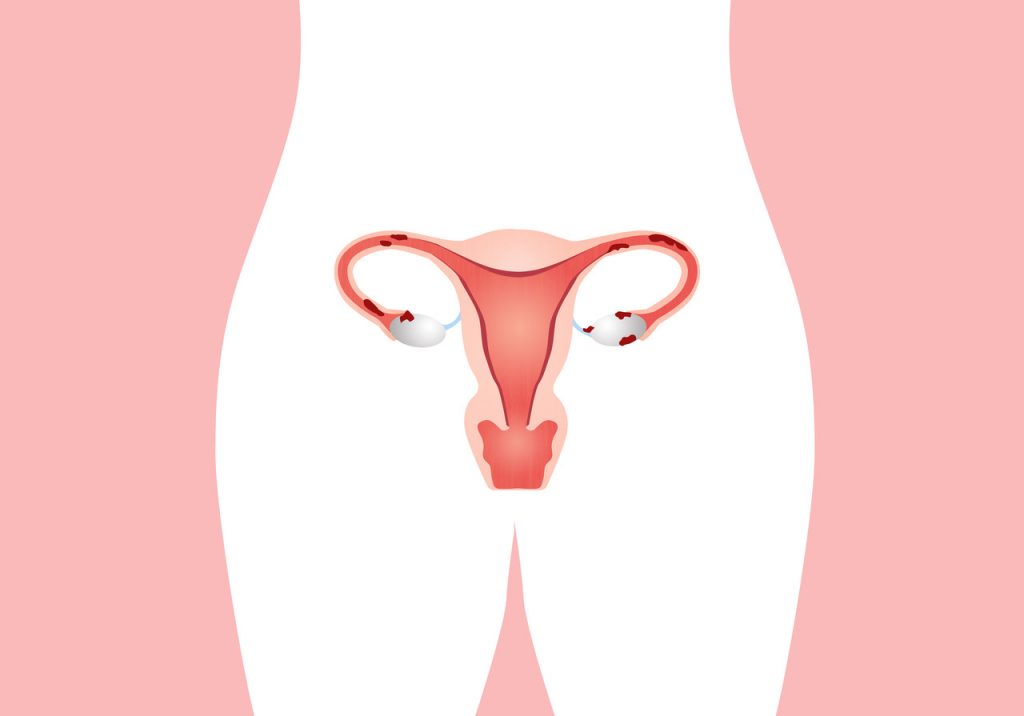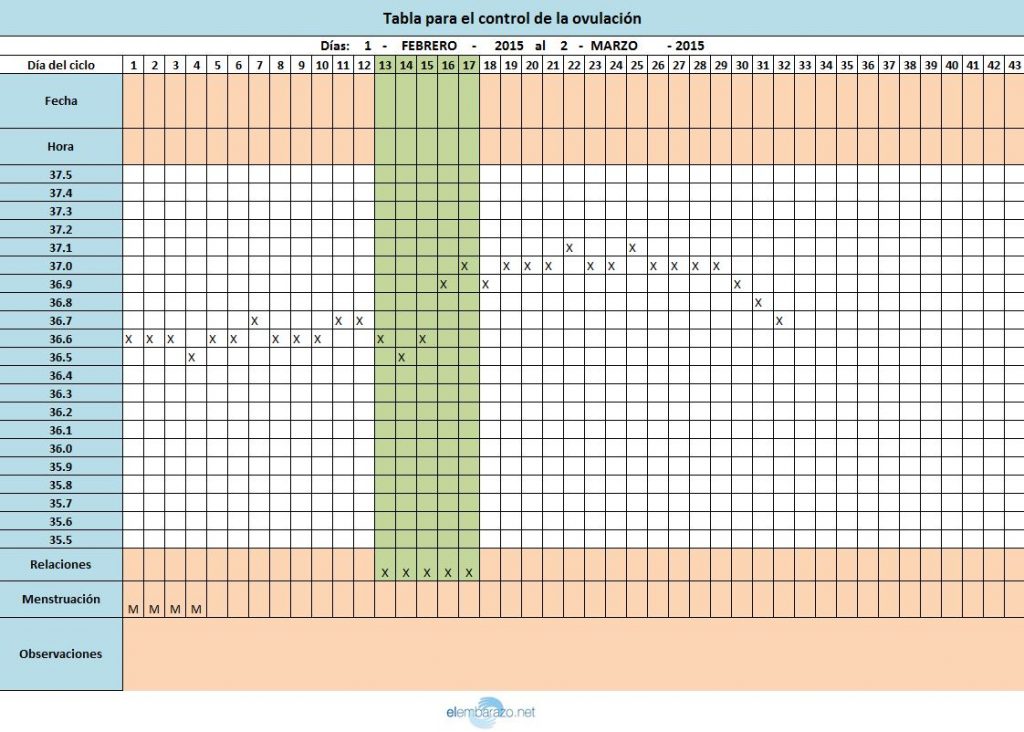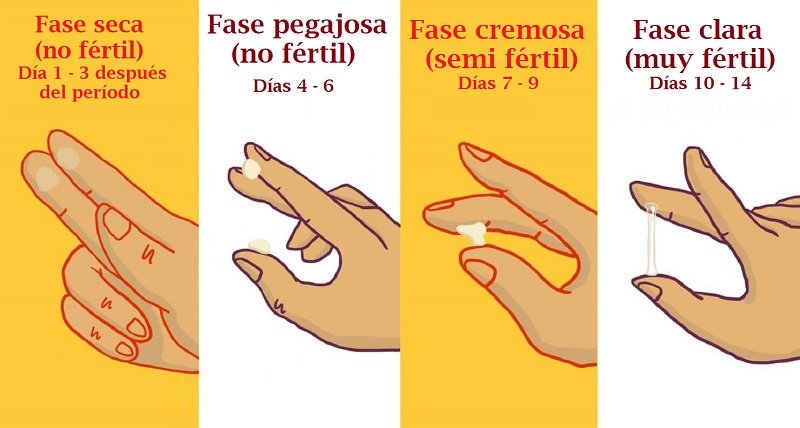Ovulation: How to know when you are ovulating
A large majority of women do not know when they ovulate and do not know how to distinguish certain “symptoms” of ovulation.
Earlier we talked about the menstrual cycle and all its characteristics, so in this section we will focus more on the ovulation stage in detail.
Explaining ovulation

The average cycle length is 28 days, but cycles lasting between 21 and 40 days are considered normal. However, nowadays various pathologies such as PCOS or hypothalamic amenorrhoea can cause a woman to go without menstruation for several months.
The first and fundamental thing to know is that the ovulatory cycle is divided into different phases separated by ovulation: the follicular phase, in which several follicles develop, and the luteal phase, the duration of which is constant in each woman, with an average duration of 14 days +/- 2 days. Ovulation occurs between the two phases.
If ovulation has taken place, the progesterone released in this phase will produce an increase in the basal body temperature by 0.2 to 0.5°C, which must be maintained for at least 11-12 days (a shorter duration could indicate, among other things, an insufficient corpus luteum). If the released egg has not been fertilised, the temperature will drop at the end of the luteal phase and menstruation will occur. If, on the other hand, the egg has been fertilised and, therefore, pregnancy has occurred, the temperature will rise a few tenths of a degree, the temperature will remain high and menstruation will not occur.
It should be borne in mind that the luteal phase is always constant, while the follicular phase can be lengthened or shortened. Thus, if our cycle lasts 46 days and we know that our luteal phase lasts 14 days, our follicular phase will have lasted 32 days, as we have to subtract the 14 days corresponding to the luteal phase from the total length of the cycle (46 days).
Some women may have a luteal phase of less than 11-12 days, in which case we would be dealing with a short luteal phase, which in the event of pregnancy would hinder or not allow implantation, which usually occurs between the 6th and 10th day post-fertilisation, not giving the fertilised egg time to implant.
Another case would be that of many women who have a deficient luteal phase, in which they do not generate enough progesterone, a hormone that prepares the endometrium for the implantation of the embryo and maintains the pregnancy until the placenta is formed, which begins to develop at the moment of implantation and which will be responsible for producing progesterone, among other pregnancy hormones.
How to know your ovulation: ovulation and fertility meter
Gynaecologists advise you to take temperature graphs for at least 4 months to see how ovulation works. The procedure is very simple, as explained below.
1) The temperature is always taken at the same time, the place where it is taken must always be the same; it can be oral, vaginal or rectal. If you have a cold or fever, the chart will not work, it will not be reliable because the temperature will be high, the same as if you are taking progesterone such as Utrogestan or Progeffik.
2) Write it down in a graph, like the one you can see below:

There are different graphs on Google that you can print out or even Apps for your mobile phone that will help you keep track. In the graph of the example we can see how the temperature rises just after ovulation and stays high until the period is about to come, when it drops again.
Know your cervical mucus
At ovulation the cervical mucus becomes less acidic and very elastic, the consistency is literally like egg white. If you put it between your fingers, it stretches several centimetres.
This discharge is also called fertile discharge as it will feed the sperm and help them to move up to the uterine tube where the egg is waiting.
Once the egg is not available, the mucus will become sticky and make it difficult for the sperm to move, trapping the sperm so that they cannot move up the tube. This discharge is called non-fertile discharge.
Therefore, in summary, we can say that there are 2 types of cervical fluid.

- Type A: It is stimulated by oestrogen, it indicates that we are fertile and it occurs before ovulation, a maximum of 5 days before ovulation. It is a type of mucus like egg white: elastic, transparent, smooth and stretchable. It allows sperm to move upwards.
- Type B: It is stimulated by progesterone, appears after the ovulation phase and indicates that we are infertile. It produces a mucus plug to prevent the entry of sperm and pathogens. It is a thick yoghurt-like mucus that can be white or yellowish.
Start noticing how your vaginal discharge changes with your menstrual cycle.
Are ovulation tests reliable?
It depends on the individual woman, for example, they are a great complement to temperature monitoring and observation of cervical mucus.
In the case of women with PCOS, ovulation tests are not 100% reliable, given that this type of test foresees a rise in the LH hormone, which in women with polycystic ovary syndrome is usually abnormally high, giving a false positive ovulation result.
Which days am I fertile?
When the egg is released it only lasts 24 hours, but the sperm have a life span of about 5 days, so in a manual cycle, the typical 28-day cycle, the fertile days would be between day 9 and day 16. But cycles vary, so you will have to calculate that your fertile days will be between 5 days before and 2 days after ovulation.
As you can see, it is possible to know your ovulation, although it requires practice and patience. As a tip, we advise you to start observing your cervical fluid and note down what changes you see. The trick is to listen to yourself and know your menstrual cycle.
